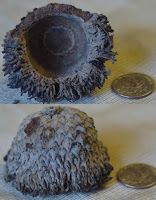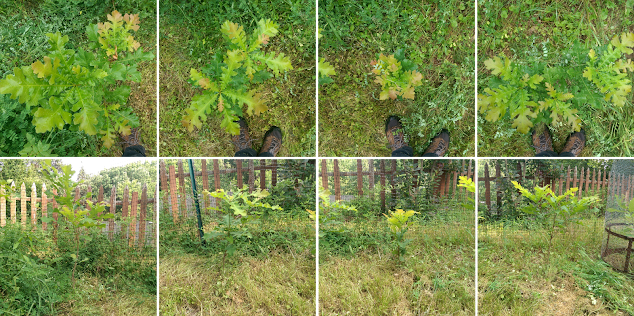 |
| Burr Oak acorn cap. |
Several years back I found a Burr Oak (Quercus macrocarpa) tree with huge acorns littering the ground beneath it. When I broke one open and tasted it... It was straight up sweet. I probably could have taken home a bag full and made a meal from them. Instead, I collected several that looked in the best condition and took them home (to Minnesota) to grow.
http://the-biologist-is-in.blogspot.com/2016/04/growing-bur-oak-trees-quercus-macrocarpa.html
It's now been a couple years and the young trees have not only survived our winters, but they've been thriving. This wasn't a forgone conclusion. The seeds came from trees growing about two thousand miles south of where I planted them. This goes against the general guideline of planting tree seeds collected from somewhere near where you plant to grow them.
Each tree is distinct, with leave size and shape variations. They're all different heights too. I suspect these early differences in growth rate will continue.
 |
| Burr Oak seedlings, each photographed from above and the side. |
The trees have only been outside for a couple winters, so it isn't guaranteed that they will survive long-term. Either later this summer or early next year I'll be transplanting the seedlings to cleared spaces in our woods where they can spend the rest of their lives. The local squirrels will be pleasantly surprised in about eight years when the seedlings should start making their first acorns.
References:
No comments:
Post a Comment